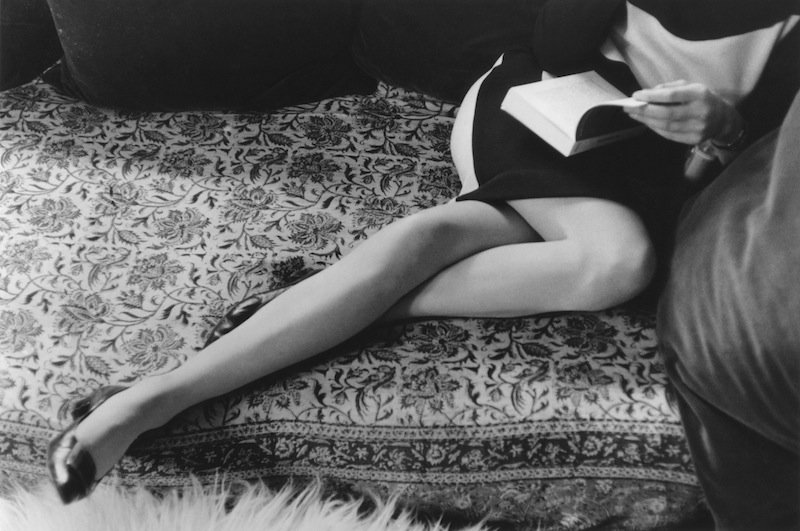The Decisive Moment as Henri Cartier-Bresson Truly Meant it
Through over 500 documents including photographs, films, paintings and drawings, Paris’ Centre Pompidou is currently offering its visitors a retrospective of French master photographer Henri Cartier-Bresson‘s impressive and celebrated oeuvre, the first to be exhibited in Europe after his death, occurred on 3 August 2004. This unmissable show opened last 12 February, and will run through 9 June—all details can be found here.
The Decisive Moment is the title of the English edition of Cartier-Bresson’s photobook originally titled Images à la Sauvette (Images On the Run), published in France in 1952. The book’s preface opens with a quote by Cardinal de Retz: “There is nothing in this world that does not have a decisive moment.” In the text, Henri Cartier-Bresson describes his conception of photography briefly, but touching all its key aspects (color, technique, composition, sequence, etc.). Today, we present an excerpt from the chapter in The Decisive Moment‘s preface regarding composition, which more than any other part of the text deals with Cartier-Bresson’s sometimes misinterpreted and misquoted idea of decisive moment.

If a photograph is to communicate its subject in all its intensity, the relationship of forms must be rigorously established. Photography implies the recognition of a rhythm in the world of real things. What the eye does is to find and focus on the particular subject within the mass of reality; what the camera does is simply to register upon film the decision made by the eye.
We look and perceive a photograph as we do a painting, in its entirety and all in one glance. In a photograph, composition is the result of a simultaneous coalition, the organic coordination of elements seen by the eye. One does not add composition as though it were an afterthought superimposed on the basic subject material, since it is impossible to separate content from form. Composition must have its own inevitability about it.
In photography there is a new kind of plasticity, the product of instantaneous lines made by movements of the subject. We work in unison with movement as though it were a presentiment on the way in which life itself unfolds. But inside movement there is one moment at which the elements in motion are in balance.
Photography must seize upon this moment and hold immobile the equilibrium of it.

The photographer’s eye is perpetually evaluating. A photographer can bring coincidence of line simply by moving his head a fraction of a millimeter. He can modify perspectives by a slight bending of the knees. By placing the camera closer to or farther from the subject, he draws a detail – and it can be subordinated, or it can be tyrannized by it. But he composes a picture in very nearly the same amount of time it takes to click the shutter, at the speed of a reflex action.
Sometimes it happens that you stall, delay, wait for something to happen. Sometimes you have the feeling that here are all the makings of a picture – except for just one thing that seems to be missing. But what one thing? Perhaps someone suddenly walks into your range of view. You follow his progress through the viewfinder. You wait and wait, and then finally you press the button – and you depart with the feeling (though you don’t know why) that you’ve really got something. Later, to substantiate this, you can take a print of this picture, trace it on the geometric figures which come up under analysis, and you’ll observe that, if the shutter was released at the decisive moment, you have instinctively fixed a geometric pattern without which the photograph would have been both formless and lifeless.
Finally, here is another excerpt, found elsewhere in the preface, which most succinctly summarizes Cartier-Bresson’s idea of decisive moment:
To me, photography is the simultaneous recognition, in a fraction of a second, of the significance of an event as well as of a precise organization of forms which give that event its proper expression.
— Henri Cartier-Bresson
Keep looking...

FotoCal — Photography Awards, Grants and Open Calls Closing in November 2024

FotoCal — Photography Awards, Grants and Open Calls Closing in October 2024

FotoCal — Photography Awards, Grants and Open Calls Closing in September 2024

FotoCal — Photography Awards, Grants and Open Calls Closing in August 2024

FotoCal — Photography Awards, Grants and Open Calls Closing in July 2024

FotoCal — Photography Awards, Grants and Open Calls Closing in June 2024

FotoCal — Photography Awards, Grants and Open Calls Closing in May 2024




